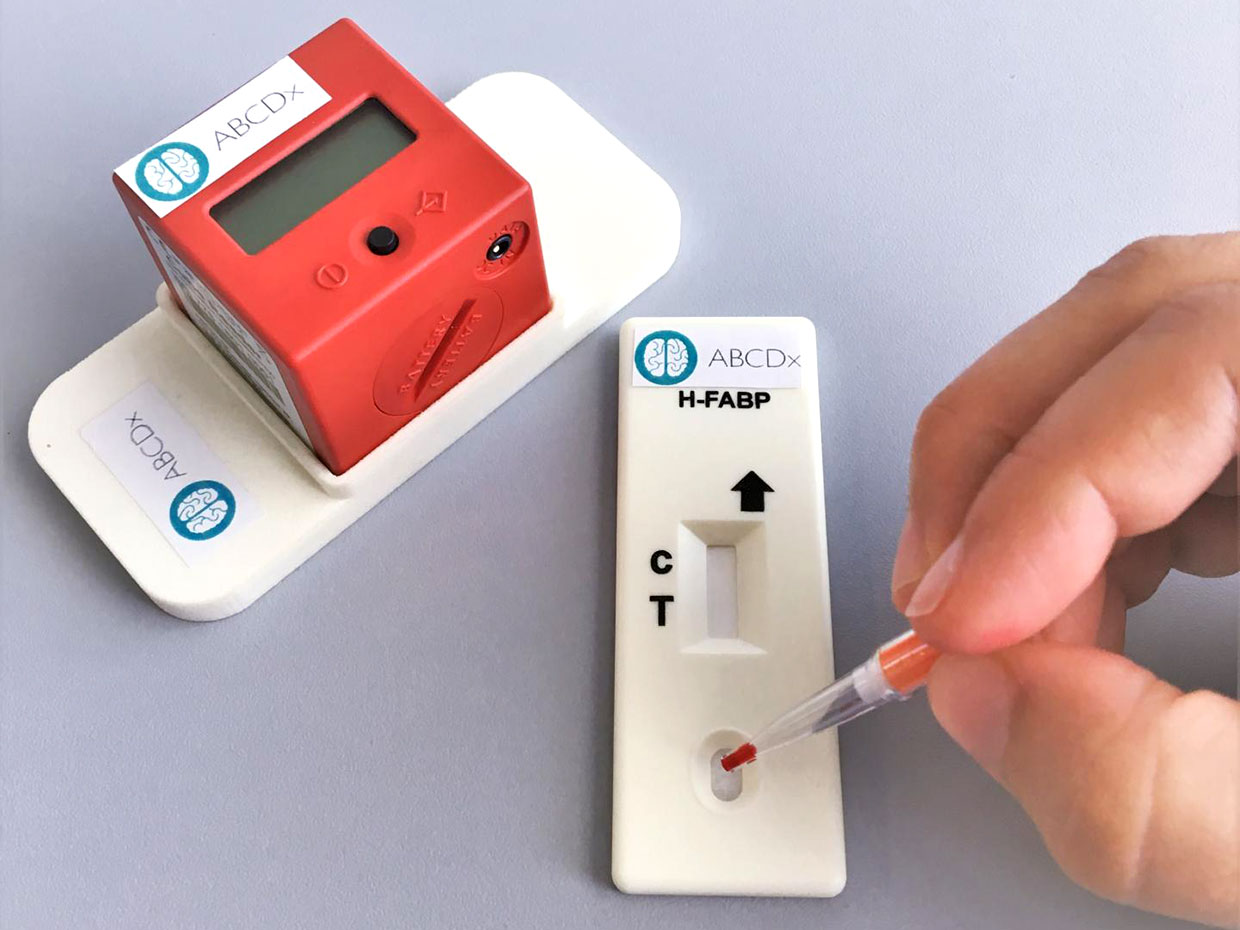Developed a new instant blood test for brain damage.
- Transfer
The test checks for the presence of two proteins in a drop of blood to see if the patient needs a CT scan.

When a person hits his head in a fall, during a sports game, in a traffic accident or in another case, he is often taken to the hospital to do a CT scan — to see if there are injuries or bruises on the brain.
In 90% of people, tomography gives a negative result , even if later they find a slight brain damage, such as concussion. Consequently, other tools are required to accurately diagnose minor brain injuries. In addition, the CT procedure can cost up to $ 2000 , and exposes a person to radiation.
Therefore, researchers have long been looking for ways to recognize which patients are required to undergo CT, and which are not worth it. One promising approach is to recognize brain damage due to pieces of its tissues and cells, or damaged vessels.
In early August, European researchers told about the progress they had made on the way to an instant test for light brain injuries, which requires only a drop of blood - and this test can tell in just a few minutes whether a patient should have a CT scan or is guaranteed no damage. The test is based on discoveries highlighted in a recent paper published in the journal PLoS One , which describes two proteins that can be detected in the blood within 24 hours after a brain injury.
“This method is used to avoid unnecessary CT scans. At the same time, you need to be 100% sure that all brain damage has been found, ”said study author Jean-Charles Sánchez of the University of Geneva in Switzerland.
Brain damage is a complex thing. Many types of cells and different parts of the brain are damaged, depending on the type and location of the impact. Tests that attempted to detect the presence of light damage using a single marker in the blood — say, a single protein secreted by neurons after an injury — turned out to be insufficiently sensitive or accurate to reliably diagnose the injury.
Now there is a race for the creation of a set of blood biomarkers that can accurately diagnose minor damage on the spot: whether it be a sports ground, an ambulance, or even a playground.
Last year, a team from Duke University identified two proteins in the blood, which, while being measured, allow doctors to distinguish patients with low brain damage and high risk.
Sanchez and his colleagues used a different tactic - they thought about whether two other proteins, which are biomarkers for stroke, can become good indicators of the presence of injury — a better studied state in which brain cells also die.
In three European hospitals dealing with emergency care, the team took blood from 132 patients admitted to the hospital with a diagnosis of "slight brain injury", and always with one more clinical symptom, such as nausea or loss of consciousness. Blood was collected from each patient within 4 hours after the injury, and each was sent to CT.
Then, scientists checked the blood of all patients for the presence of 13 proteins associated with a stroke, and two proteins that were previously associated with light brain injuries - S100B and GFAP. In early studies, the team tested other possible biomarkers of brain damage, including neurofilaments - but they only appear in the blood 24 hours after the injury, which is not suitable for a quick test.
As a result, levels of only four proteins - S100B, GFAP, and two proteins associated with stroke, H-FABP and IL-10 - were significantly overestimated in the blood of patients who had damage on CT scan. This means that the proteins mentioned can be good early markers of light brain injury.
The researchers then tested various combinations of these four proteins to determine the smallest possible combination suitable for diagnosing injury. The proteins H-FABP and GFAP won.
When measured together, these two markers accurately predict if a person has light brain damage and the need for CT in 100% of cases. Also, such a test correctly identifies people without injury in 46% of cases. This means that such a test will have false positives, and some people without injury will have to undergo CT, but this will still reduce the total number of unnecessary scans.
All four proteins together determine the absence of injury in a person in 56% of cases. However, testing four proteins in an instant test will be a more expensive and complicated procedure.
The team confirmed the results on the second group of subjects, consisting of 109 patients.
H-FABP in general turned out to be an excellent marker of damage, as Sanchez said, because this protein is shallow, loves water, and easily passes through the hemato-encephalic barrier , so that it “enters the blood faster than others, only 3 hours later” after injury.
In 2014, Sanchez and colleagues founded the biotechnology company ABCDx to develop biomarker tests for brain damage. Their first generation rapid test for light injuries was called TBIcheck, and checked for the presence of the H-FABP protein. Thanks to new discoveries, the next test of the company will be double, says Sanchez, and will check for the presence of both H-FABP and GFAP.
The company plans to launch clinical trials of the test in three hospitals in Spain in September, and hopes to start selling the device as early as 2019.
